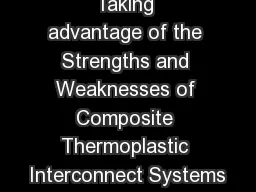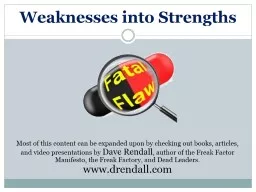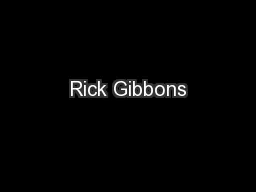PPT-Taking advantage of the Strengths and Weaknesses of Composite Thermoplastic Interconnect
Author : kittie-lecroy | Published Date : 2018-09-25
Glenair Factory Team Jim Plessas Mike Wofford Ken Cerniak Interconnect Seminar Composite Thermoplastic A Combination of HighTech Materials with Superior Performance
Presentation Embed Code
Download Presentation
Download Presentation The PPT/PDF document "Taking advantage of the Strengths and We..." is the property of its rightful owner. Permission is granted to download and print the materials on this website for personal, non-commercial use only, and to display it on your personal computer provided you do not modify the materials and that you retain all copyright notices contained in the materials. By downloading content from our website, you accept the terms of this agreement.
Taking advantage of the Strengths and Weaknesses of Composite Thermoplastic Interconnect: Transcript
Download Rules Of Document
"Taking advantage of the Strengths and Weaknesses of Composite Thermoplastic Interconnect"The content belongs to its owner. You may download and print it for personal use, without modification, and keep all copyright notices. By downloading, you agree to these terms.
Related Documents














